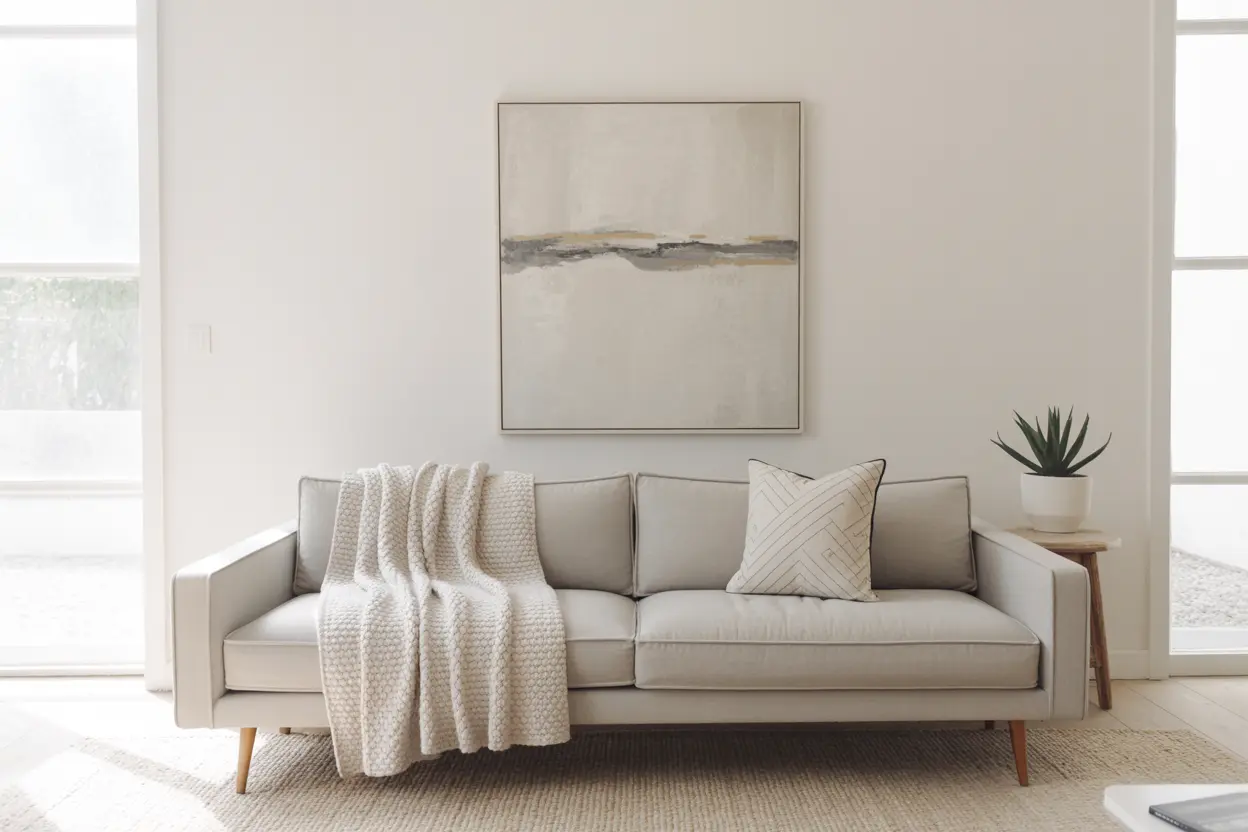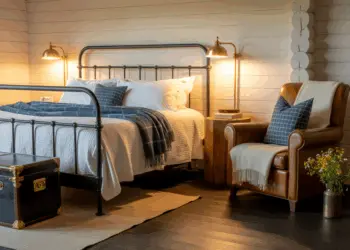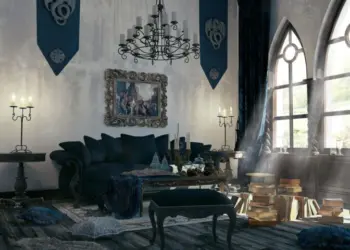Have you always dreamed of having a stylish, elegant and sophisticated interior? Then minimalist style is the perfect choice for your home.
Combining simplicity and elegance, it fully reflects the image of refinement and modernity so coveted in today’s contemporary world. Today, you’ll have the chance to find out more about this decorating style.
Today we’re dedicating this article to minimalist style. You will discover:
- The meaning of minimalist style
- The characteristics of minimalist style
- The essential elements of minimalist style
By the end of this article, you’ll have familiarized yourself with the world of minimalism. So let’s get started…
Table of Contents
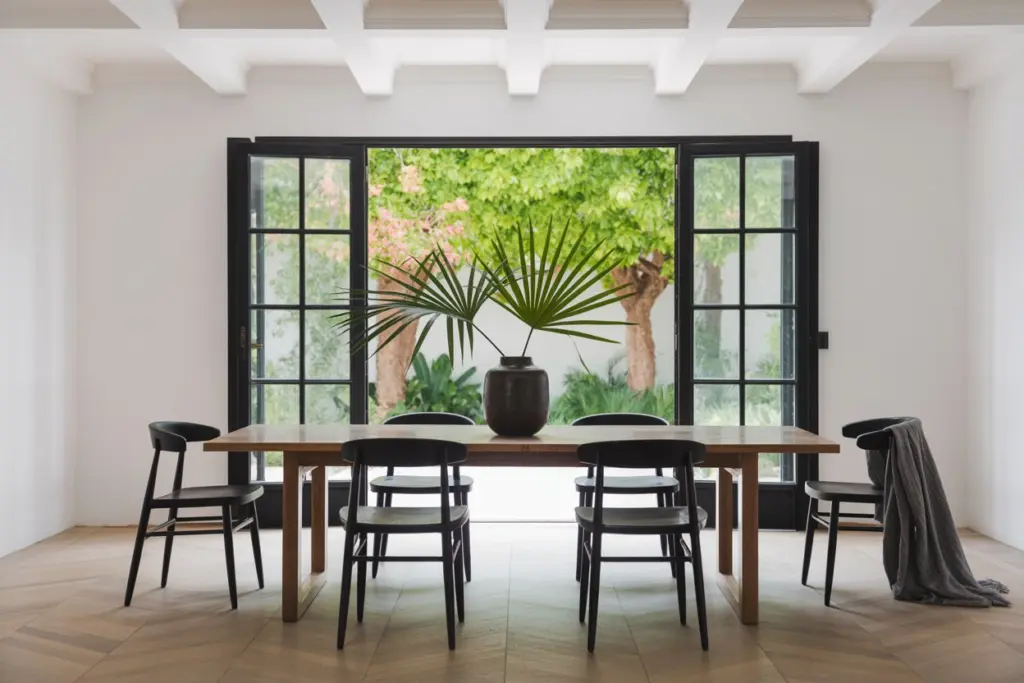
What is minimalist style?
When it comes to interior design, there are many different types: modern, rustic, retro, contemporary and so on. Minimalism refers mainly to contemporary decor, although it can also be found in other styles.
As its name suggests, minimalist style is decorating that focuses on the essentials. It’s inspired by the principle “Less is more”. It’s a move away from cluttered, blinged-out accessories and a focus on the bare minimum. In other words, it’s simple, uncluttered and unadorned.
If we go back to its origins, the minimalist style was born in the 60s. During this period, society was faced with an excess of consumerism, especially when it came to interior design. People were buying whatever they could find at the market, and integrating it into their homes, creating a kind of clutter within the room itself.
To remedy this, the room needed to be de-cluttered, and that’s where the concept of minimalism came in.
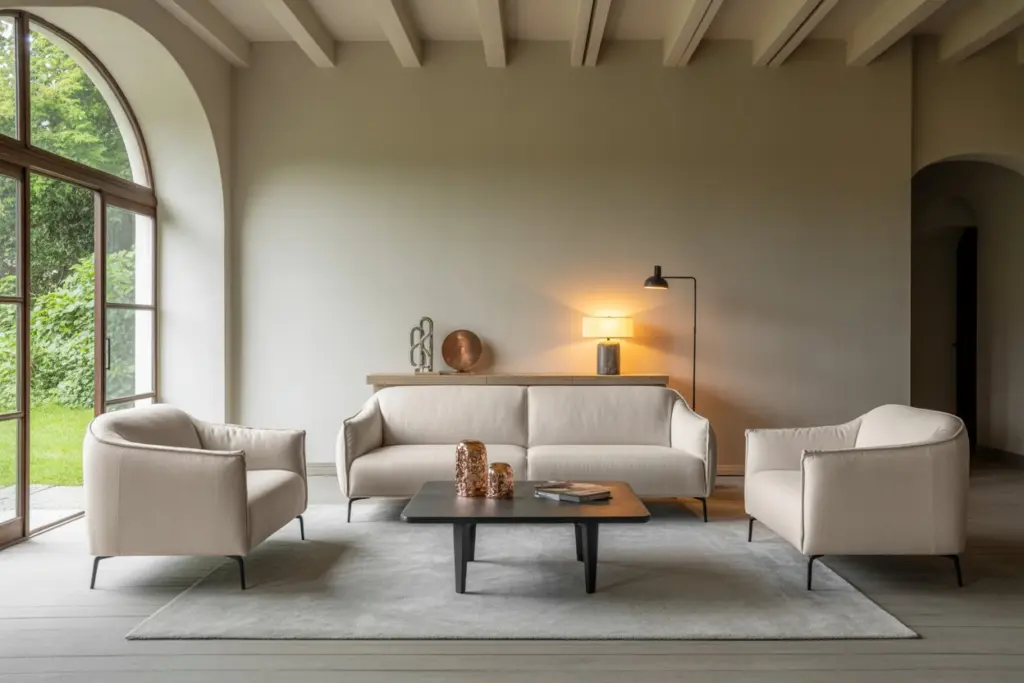
Minimalist style: what’s it all about?
There are 5 main characteristics of the minimalist style: simplicity, functionality, elegance, cleanliness and modernity.
Simplicity
While a bohemian or industrial style may combine a multitude of decorative objects and accessories, this is not the case with the minimalist style. It’s all about keeping things simple, and this should be reflected in the decor. In this kind of decorating, the bare minimum is used, i.e. only the essential furnishings and accessories are integrated into a room.
For example, for a bedroom, the principle is to add only a bed, two bedside tables, a desk, an armchair and a few storage units. Some people even prefer to put the storage units in another room to save space.
Similarly, when it comes to decorating accessories, keep things as simple as possible. A few pictures, mirrors, textiles and lights are all you need to decorate the room. So there’s no need to go overboard with decorative objects.
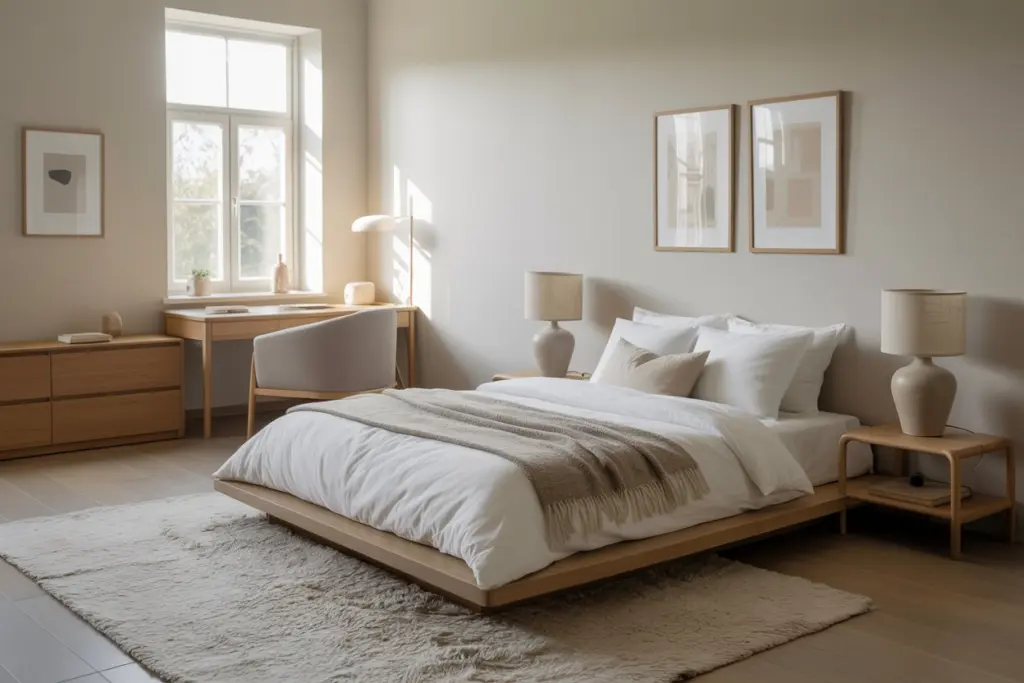
Functionality
As mentioned above, minimalist style demands the bare minimum. As a result, you must avoid cluttering your interior with unnecessary items at all costs. If possible, avoid putting two elements of the same functionality in a single room, unless it’s for a practical reason.
For example, you don’t need two sofas in the living room. One medium-sized sofa will suffice to dress up the room. In short, try to keep to the essentials: ask yourself whether you really need this or that item when planning your interior.

Elegance of minimalist style
It’s often said that “what’s simple is elegant”! This is absolutely true, because in the minimalist style, we prefer to emphasize the chic and class of each element. So if you want to adopt this style, you need to focus a little more on quality, rather than quantity.
Furniture must be made from solid, well-treated materials (carelessness is not tolerated in this style), and decorative items must be equally sophisticated and luxurious.
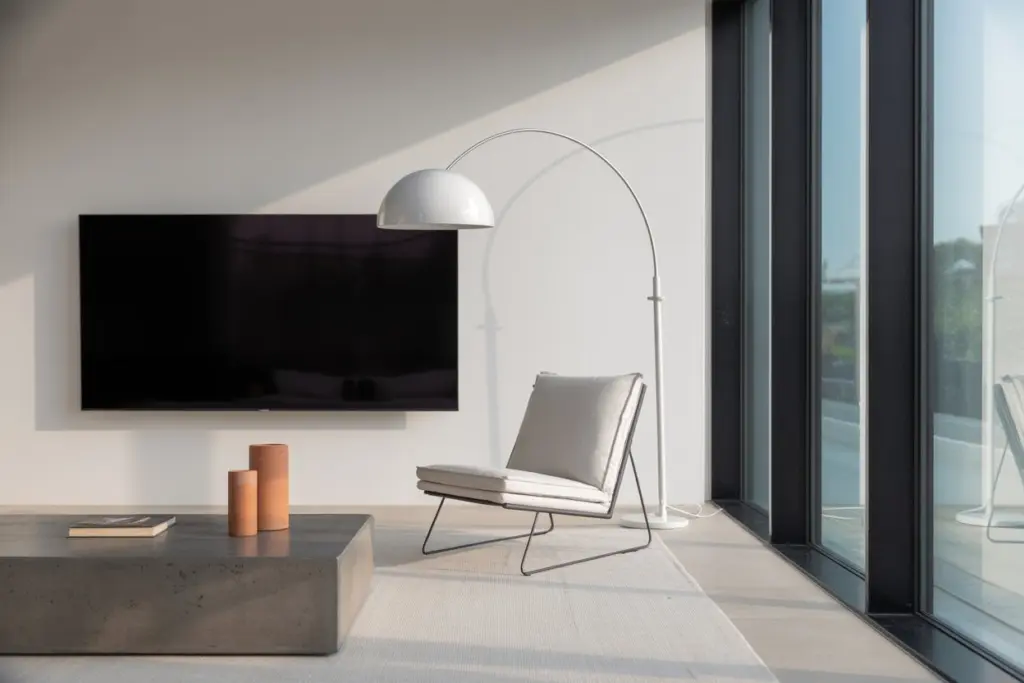
Cleanliness
Of course, cleanliness is an important criterion in any decorating scheme. Nevertheless, it is very much required, even indispensable in a minimalist style. When we talk about cleanliness, we’re not just talking about cleaning and sanitizing rooms. It also means better storage and ventilation.
On the one hand, the arrangement of each piece of furniture and decorating accessory must follow a strict rule. These must be placed in harmony, so that there’s less clutter and more space.
To arrange them properly, there are a number of criteria to be respected, including the size and configuration of the room, the size of each piece of furniture, the various angles that define the corners of each room, and so on.
On the other hand, a minimalist home is one that’s very much about ventilation and light. If you want to adopt it, you’ll need to add lots of openings with bay windows. This will not only brighten the room, but also circulate the air. The house also needs to be spacious to make it easy to move around.
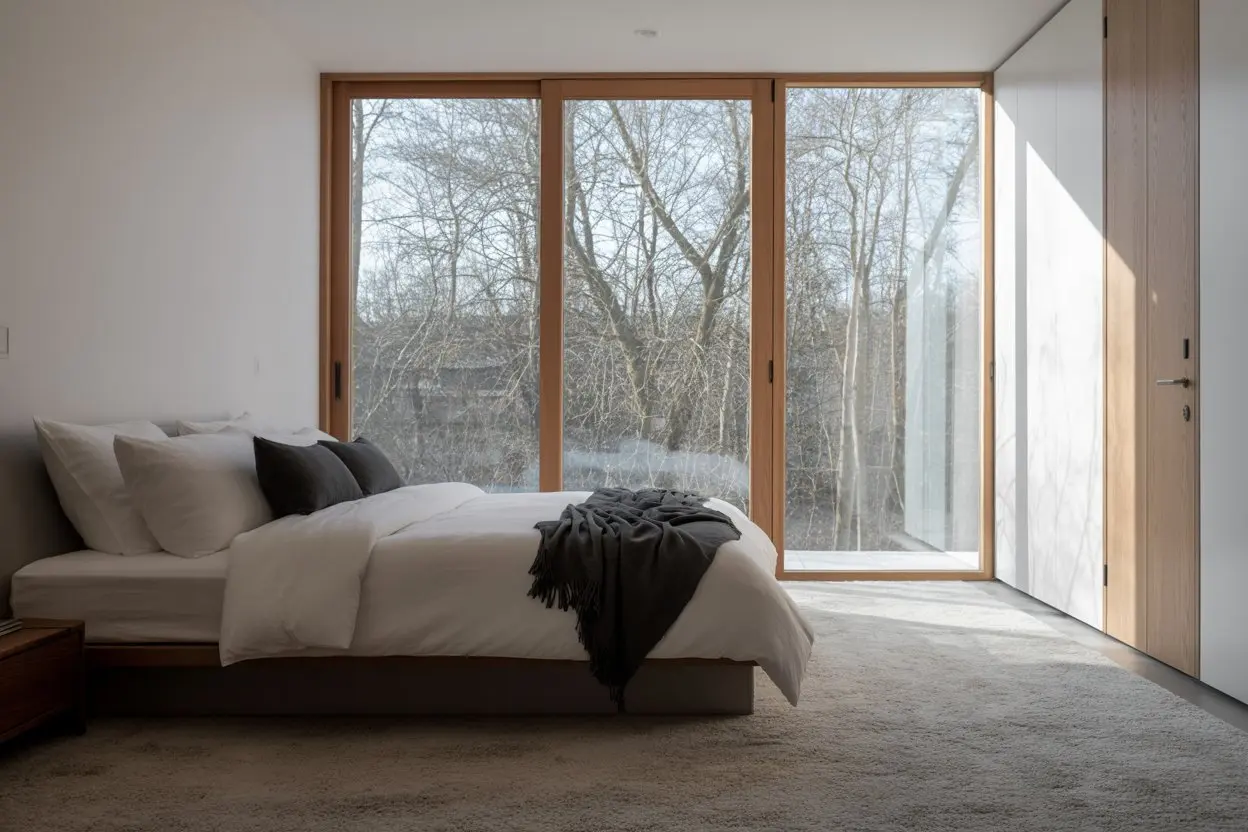
Modernity of minimalist style
As a reflection of contemporary style, a minimalist home needs to be modern and urban. Gone are the days of vintage furniture and decorative objects. Instead, opt for the latest trends. The same applies to the materials used.
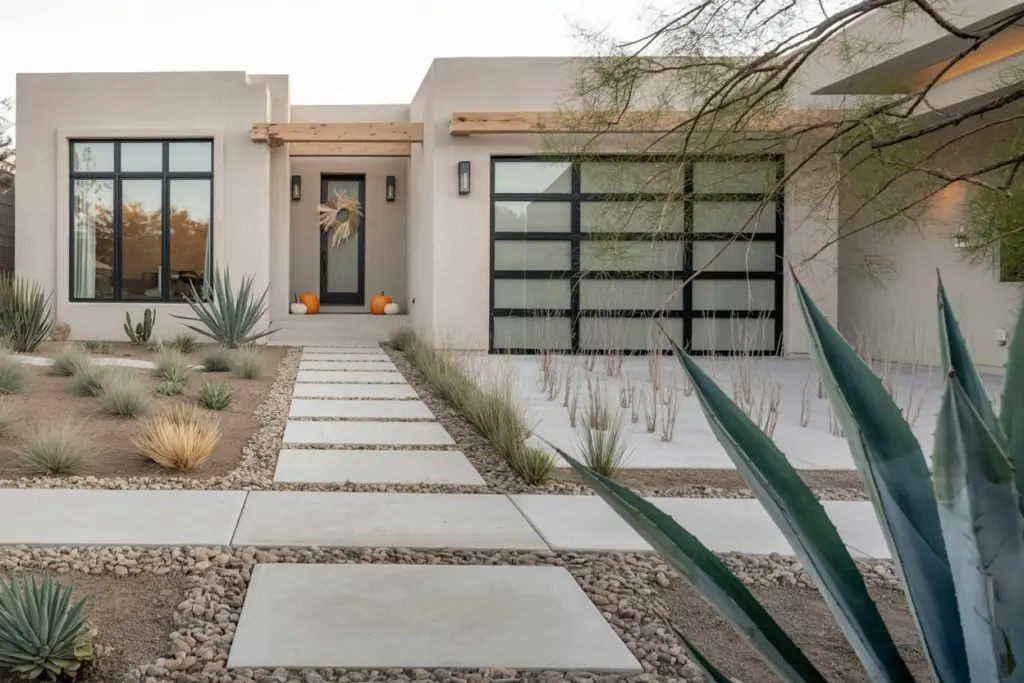
Minimalist style: what are the elements?
To achieve minimalist decorating success, there are certain elements you absolutely must incorporate into your interior. These include graphic furnishings, noble coverings and materials, sober, uncluttered colors and simple yet elegant decorative elements.
Graphic furnishings
Representing the contemporary style, minimalism reflects the image of futuristic, innovative decor. It therefore favors graphic furnishings, with rather linear shapes. If you want to adopt this style, avoid furniture with lots of ornamentation or intricate details (sculptures, stickers, etc.). Instead, keep things simple and sober.
Furniture in a minimalist home must also be functional and practical. As with contemporary decor, they must incorporate the latest innovations and technologies.
And if possible, choose furniture that can perform several functions at the same time (for example: a sofa-bed, a storage bed…). Not only does this give you more space, it’s also very economical.
Finally, it’s important that your furnishings provide you with comfort and ease. Sofas, beds and chairs need to be both comfortable and sturdy enough to withstand shocks of all kinds.
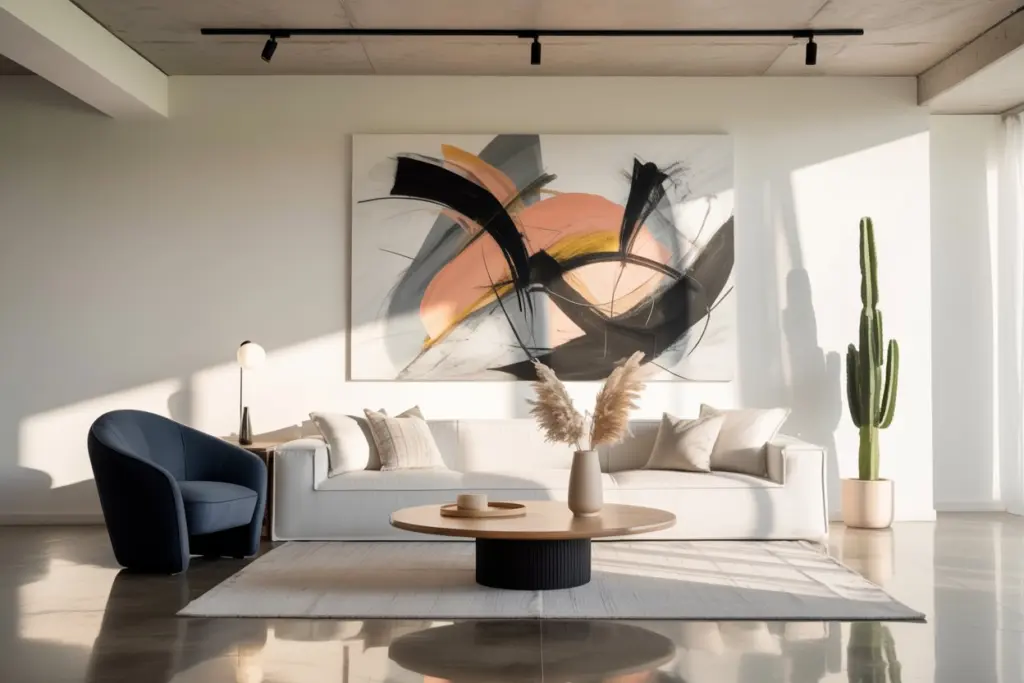
Chic, modern floor coverings
In a minimalist home, the floor coverings of choice are tiles, laminate parquet and polished concrete.
Tiling
Tiles have always been one of the most popular floor coverings. It’s refined, practical and highly resistant. It also comes in a wide range of shapes and patterns, to suit all tastes.
When it comes to minimalist decorating, simple tiles are preferable, i.e. plain and regular. Avoid patterned designs. Likewise, tiles with a smooth structure are preferable, unless you’re decorating a high-humidity room such as a bathroom or kitchen.
Finally, when it comes to color, stick to sober tones like gray or black, or more refined ones like white or beige.
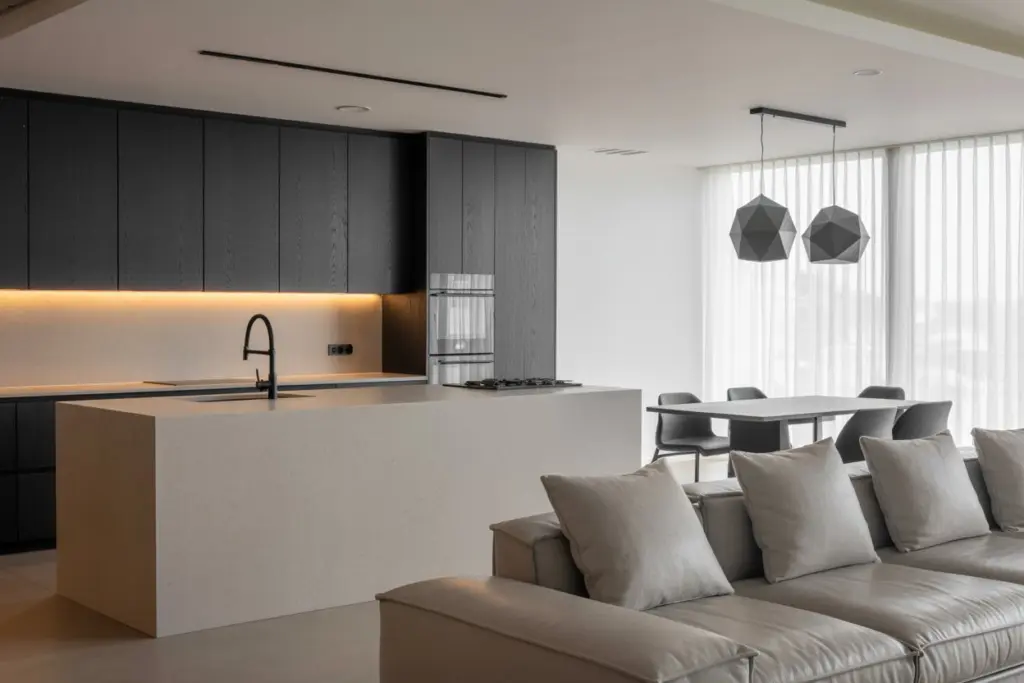
Laminate flooring
You can also choose laminate flooring for your minimalist-style interior. Laminate flooring is made from resin, HDF or MDF panels and a decor foil. It’s known as “parquet” because it closely imitates the design of a wood floor.
Why choose laminate flooring? It’s a material with a modern, refined design. It also provides good thermal insulation and is more affordable than wood or tiled flooring. However, it should not be installed in bathrooms, as it is not water-resistant.
How to choose laminate flooring For a minimalist-style home, you should opt for laminate flooring in gray or brown (wood effect), laid in strips.
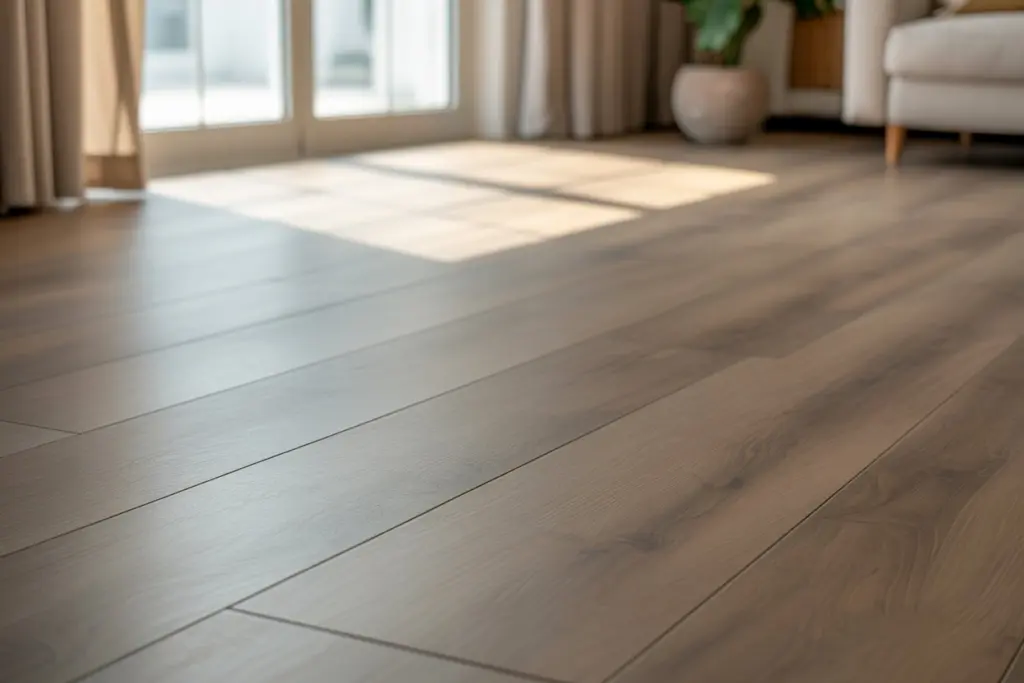
Polished concrete
Polished concrete has become increasingly popular in recent years. In fact, it’s highly recommended for a minimalist decor, as it optimizes lighting and gives a chic air to the room. As a reminder, polished concrete is a coating obtained by polishing a concrete surface.
The aim here is to highlight the aggregates that make up the concrete. For a more attractive finish, it can be smoothed with resin or stained.
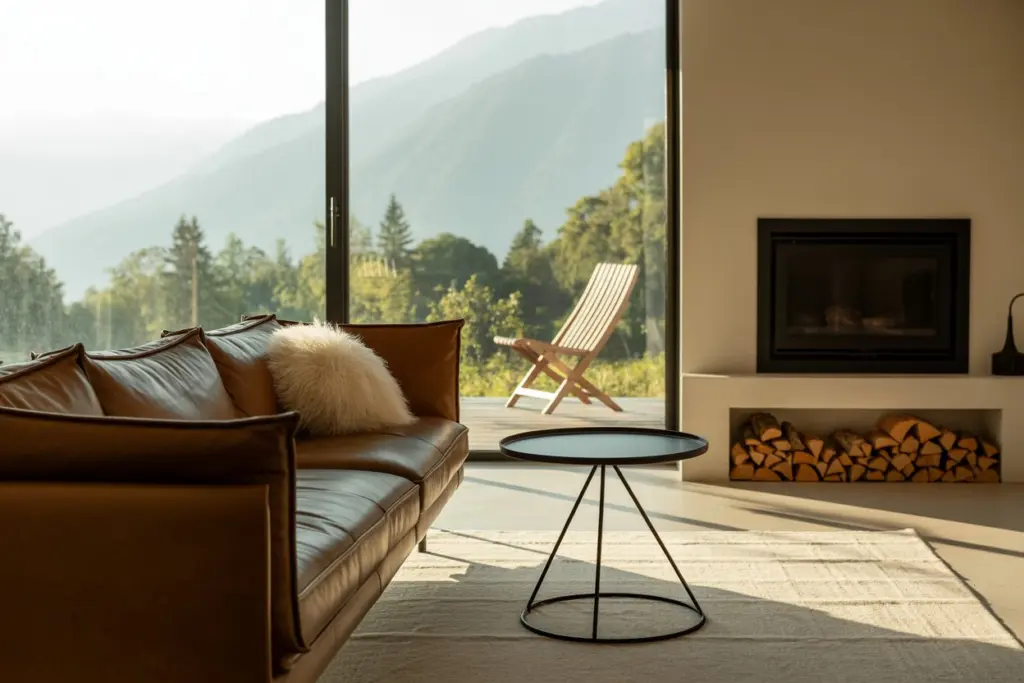
Noble materials
As for materials, those best suited to a minimalist home are: treated wood, metals, glass and artificial materials.
Treated wood
Wood is a robust, chic and resistant material. So it’s only natural to incorporate it into minimalist decor. But there’s no question of using it in its natural state. It needs to be treated and polished for a more modern effect. You can even opt for processed wood, such as melamine or MDF, to achieve a better design.
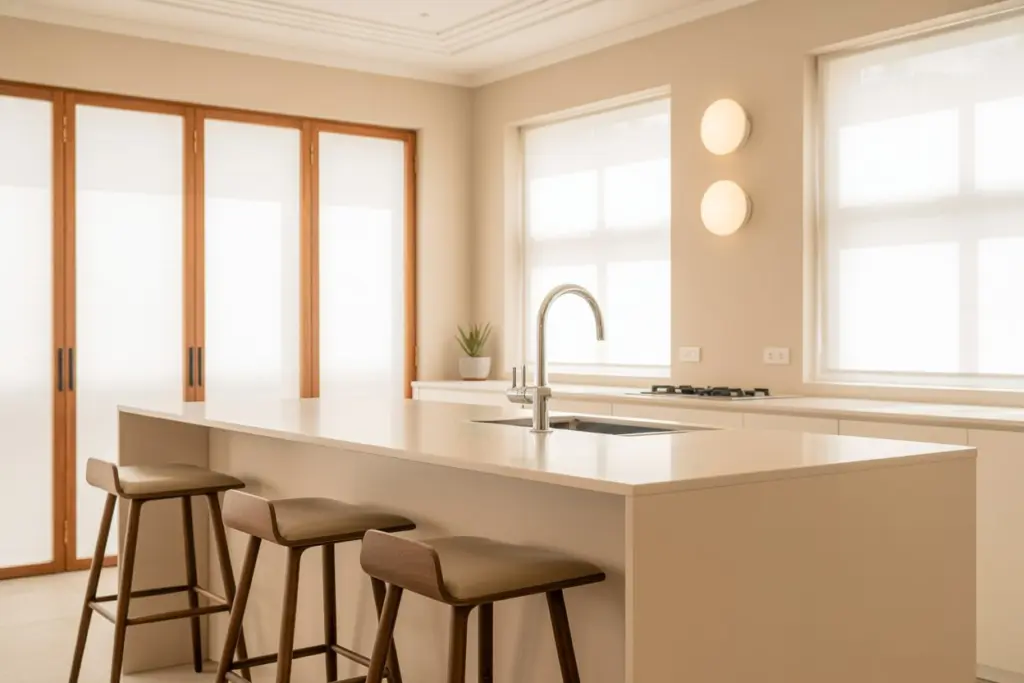
Metals
Metals such as aluminum, stainless steel and steel are highly appreciated in minimalist design. These chromatically original materials reflect refinement and chic. They are also functional, as they can be adapted to any décor. And, like wood, they are resistant and sturdy.
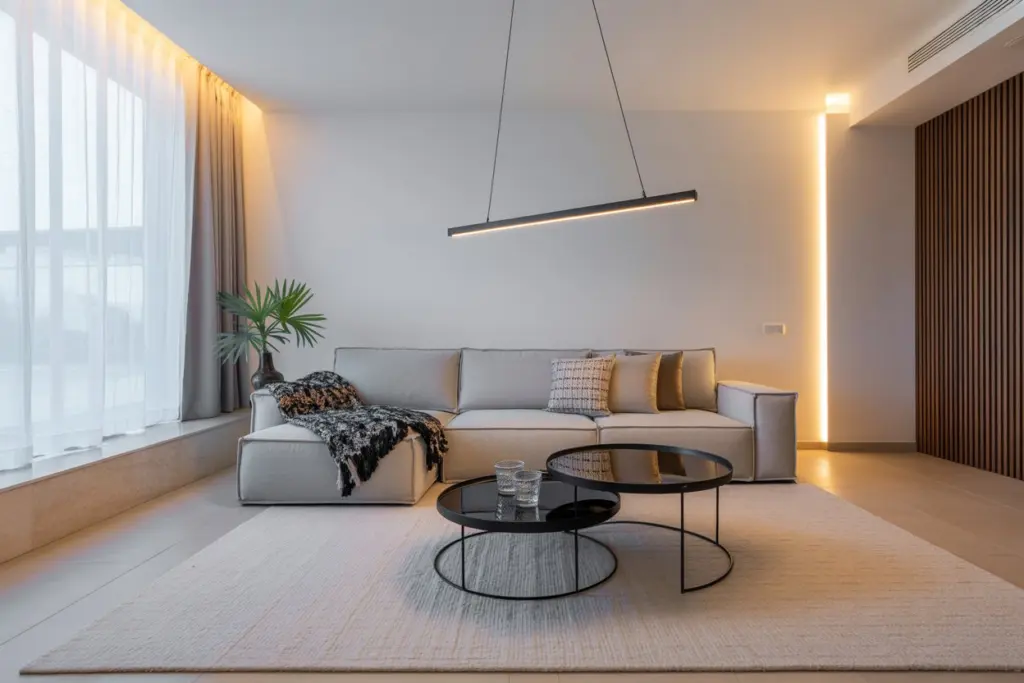
Glass
Glass is a luxurious and refined material, which is why it’s the ideal choice for minimalist design. You can use it for furniture (glass tables, etc.), decorative items (mirrors, vases, etc.), openings (bay windows) and even as a material for stair railings or partitions.
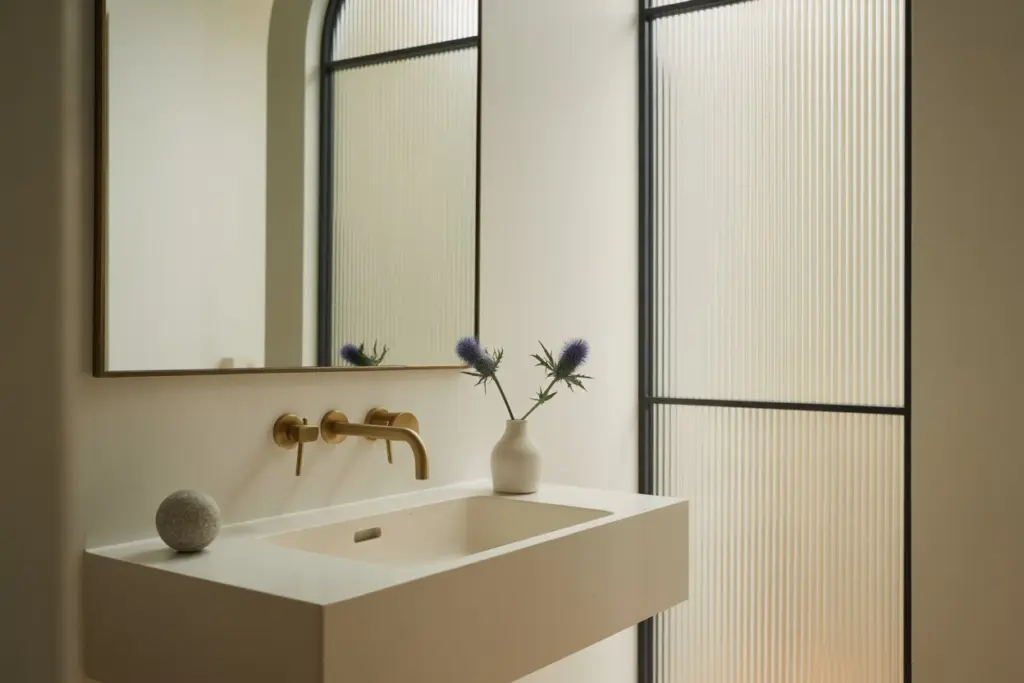
Matériaux artificiels
Les matériaux artificiels tels que le vinyle, le PVC et l’acrylique ne sont pas nécessairement à proscrire dans un décor minimaliste. Ces matériaux sont tout aussi design et sophistiqués que les matériaux naturels, tout en étant plus abordables.

Sober, pure colors
Colors have a major impact on how a home looks, so they shouldn’t be overlooked at all. In a minimalist style, colors should be neutral, sober and soft. The most favored is white, but you can also choose other tones such as gray, chrome or beige.
You can also play on contrast by combining darker colors with lighter ones, or even white.
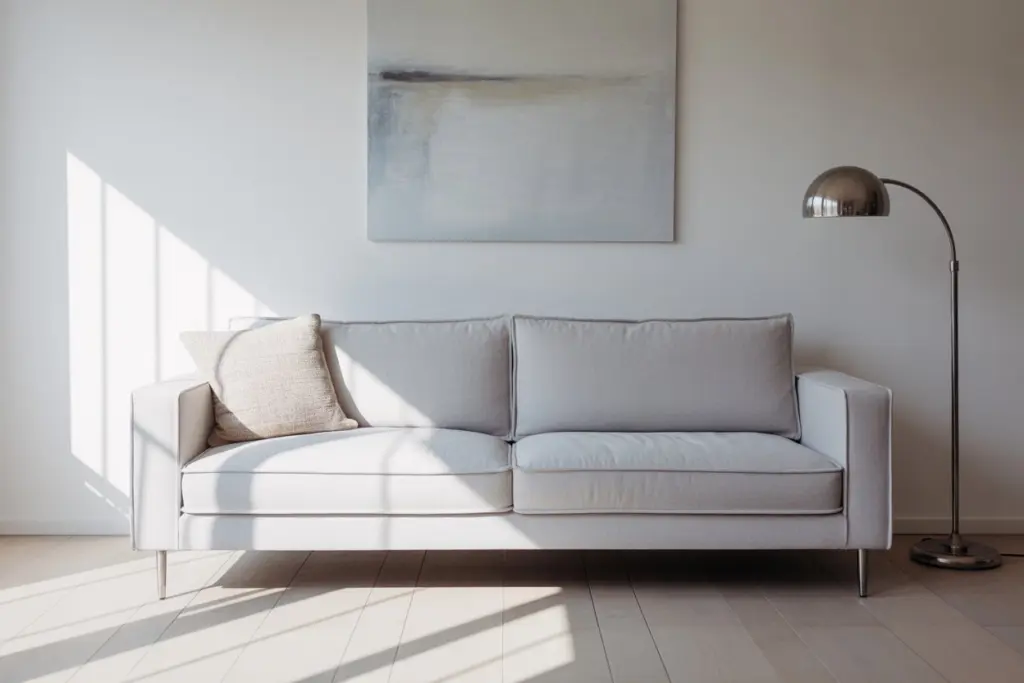
Decorative elements
When it comes to accessories, keep things simple. This means incorporating only one or two elements in each room.
For your walls, for example, one or two minimalist pictures are enough throughout the room. To accompany them, you can add a mirror and/or a clock, but no more. For the bed, opt for plain, uncluttered sheets and decorative cushions.
Above all, don’t neglect the lighting. The room needs to be bright. So opt for LED spotlights, halogen floor lamps or incandescent bulbs.
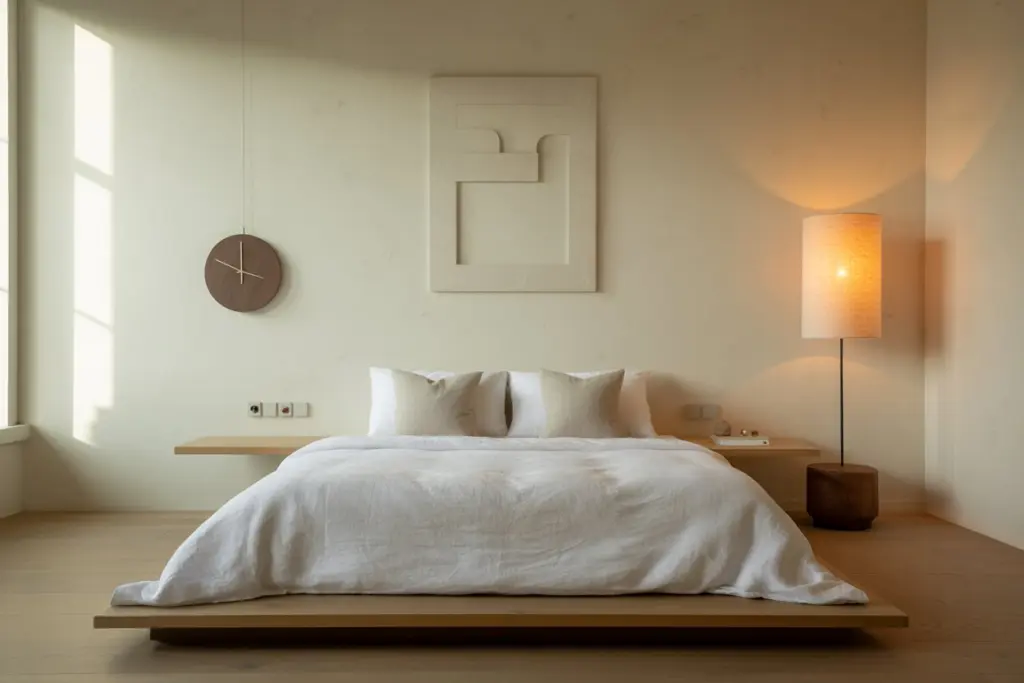
Now you know everything!
Thanks to this article, you’ve been able to understand the ins and outs of minimalist style, and this world no longer holds any secrets for you. From now on, you’ll have no trouble transposing it into your interior.
